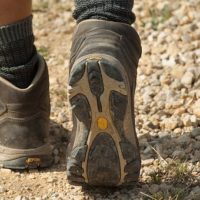When I ask senior leaders about learning walks, most say that they do them regularly. When pressed about what they actually do during such a learning walk, the answer is usually more about walking than learning. A few systematically gather data about learning that can be used to monitor changes in the school’s learning culture, but mostly it is management by walking about, sometimes observing teaching rather than learning, sometimes monitoring levels of student engagement.
So what might leaders seek out during a learning walk? Try walking around your school, and look into a range of lessons to seek evidence for the following:
- Teachers talking to students about how they learn (as opposed to what they learn); students talking about themselves as learners; the fluency and consistency of the language being used.
- Teachers offering students intriguing/engaging activities that sustain interest; students engaging with enthusiasm and excitement.
- Vibrant and interesting display that supports the teaching and learning; teachers and students using such display routinely in lessons.
- Teachers deliberately encouraging student questions; students asking their own questions purposefully; students pursuing their own lines of enquiry.
- Opportunities for students to exercise choice; teachers adapting lessons to better meet students’ interests
- Teachers helping students to undertake challenging work that enables them to work at the edge of their comfort zones; students wrestling with and relishing tackling material that they find difficult.
- Teachers making assessment criteria/objectives public; evidence that AfL is alive and well; students aware of ‘what a good one looks like’.
- Students creating meaning for themselves; teachers giving students time to do so.
- Teachers scaffolding and supporting collaborative learning; students learning with and from their peers.
- Feedback to students that is formative and related to previous work/achievements and future targets; students who can articulate how they are becoming more effective as a learner.
- Teachers displaying fallibility and that they do not know all of the answers; students behaving with confident uncertainty.
A few questions . . . . .
- What else might you look for? What would you add to this list?
- Can you observe for all of these things simultaneously, or will you focus on a subset?
- What would you expect to see / hear that would convince you that these things are happening?
- How might you ensure consistency across observers, and is this important?
- How might you record your observations?
- What would you use the observations for?
- How might you use such a list to engage teachers with considering the culture of their own classrooms?
- How would they assess their own classroom against this list?
- If asked, what list would they come up with?
- How might you engage students in developing your own list of desirable features?
- How might students be enabled to contribute to your learning walk data?
Sounds more like a hike than a walk? But imagine how inspiring the scenery along the way will be.


Some interesting issues bought up here about how to get ‘beneath the surface’. I would think that asking the students about what they are learning and why gets you deep into it immediately.